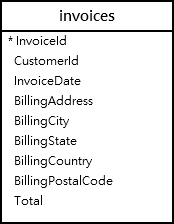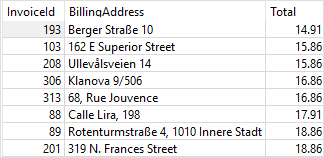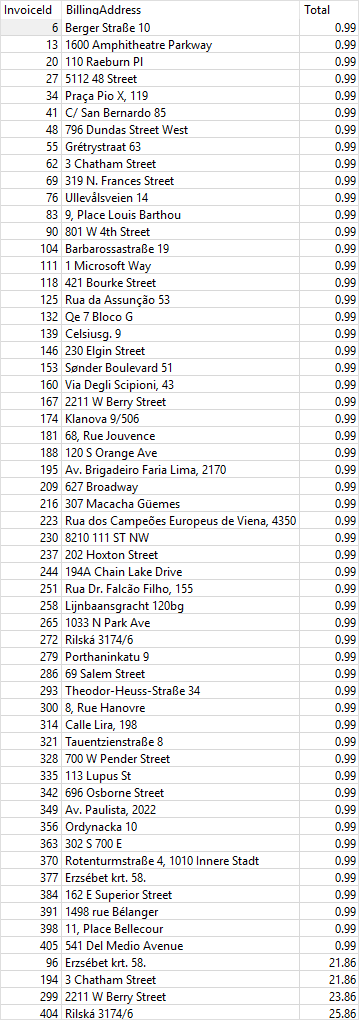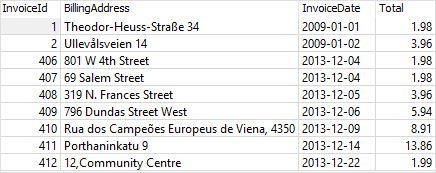Summary: in this tutorial, you will learn how to use the SQLite BETWEEN operator to test whether a value is in a range of values.
Introduction to SQLite BETWEEN Operator
The BETWEEN operator is a logical operator that tests whether a value is in range of values. If the value is in the specified range, the BETWEEN operator returns true. The BETWEEN operator can be used in the WHERE clause of the SELECT, DELETE, UPDATE, and REPLACE statements.
The following illustrates the syntax of the SQLite BETWEEN operator:
test_expression BETWEEN low_expression AND high_expression
Code language: SQL (Structured Query Language) (sql)In this syntax:
test_expressionis an expression to test for in the range defined bylow_expressionandhigh_expression.low_expressionandhigh_expressionis any valid expression that specify the low and high values of the range. Thelow_expressionshould be less than or equal tohigh_expression, or theBETWEENis always returns false.- The
ANDkeyword is a placeholder which indicates thetest_expressionshould be within the range specified bylow_expressionandhigh_expression.
Note that the BETWEEN operator is inclusive. It returns true when the test_expression is less than or equal to high_expression and greater than or equal to the value of low_expression:
test_expression >= low_expression AND test_expression <= high_expression
Code language: SQL (Structured Query Language) (sql)To specify an exclusive range, you use the greater than (>) and less than operators (<).
Note that if any input to the BETWEEN operator is NULL, the result is NULL, or unknown to be precise.
To negate the result of the BETWEEN operator, you use the NOT BETWEEN operator as follows:
test_expression NOT BETWEEN low_expression AND high_expression
Code language: SQL (Structured Query Language) (sql)The NOT BETWEEN returns true if the value of test_expression is less than the value of low_expression or greater than the value of high_expression:
test_expression < low_expression OR test_expression > high_expression
Code language: SQL (Structured Query Language) (sql)SQLite BETWEEN operator examples
We will use the invoices table from the sample database for the demonstration:

SQLite BETWEEN numeric values example
The following statement finds invoices whose total is between 14.96 and 18.86:
SELECT
InvoiceId,
BillingAddress,
Total
FROM
invoices
WHERE
Total BETWEEN 14.91 and 18.86
ORDER BY
Total;
Code language: SQL (Structured Query Language) (sql)Here is the output:

As you can see, the invoices whose total is 14.91 or 18.86 are included in the result set.
SQLite NOT BETWEEN numeric values example
To find the invoices whose total are not between 1 and 20, you use the NOT BETWEEN operator as shown in the following query:
SELECT
InvoiceId,
BillingAddress,
Total
FROM
invoices
WHERE
Total NOT BETWEEN 1 and 20
ORDER BY
Total;
Code language: SQL (Structured Query Language) (sql)The following picture shows the output:

As clearly shown in the output, the result includes the invoices whose total is less than 1 and greater than 20.
SQLite BETWEEN dates example
The following example finds invoices whose invoice dates are from January 1 2010 and January 31 2010:
SELECT
InvoiceId,
BillingAddress,
InvoiceDate,
Total
FROM
invoices
WHERE
InvoiceDate BETWEEN '2010-01-01' AND '2010-01-31'
ORDER BY
InvoiceDate;
Code language: SQL (Structured Query Language) (sql)Here is the output:

SQLite NOT BETWEEN dates example
The following statement finds invoices whose dates are not between January 03, 2009, and December 01, 2013:
SELECT
InvoiceId,
BillingAddress,
date(InvoiceDate) InvoiceDate,
Total
FROM
invoices
WHERE
InvoiceDate NOT BETWEEN '2009-01-03' AND '2013-12-01'
ORDER BY
InvoiceDate;
Code language: SQL (Structured Query Language) (sql)The output is as follows:

In this tutorial, you have learned how to use the SQLite BETWEEN operator to test whether a value is in a range of values